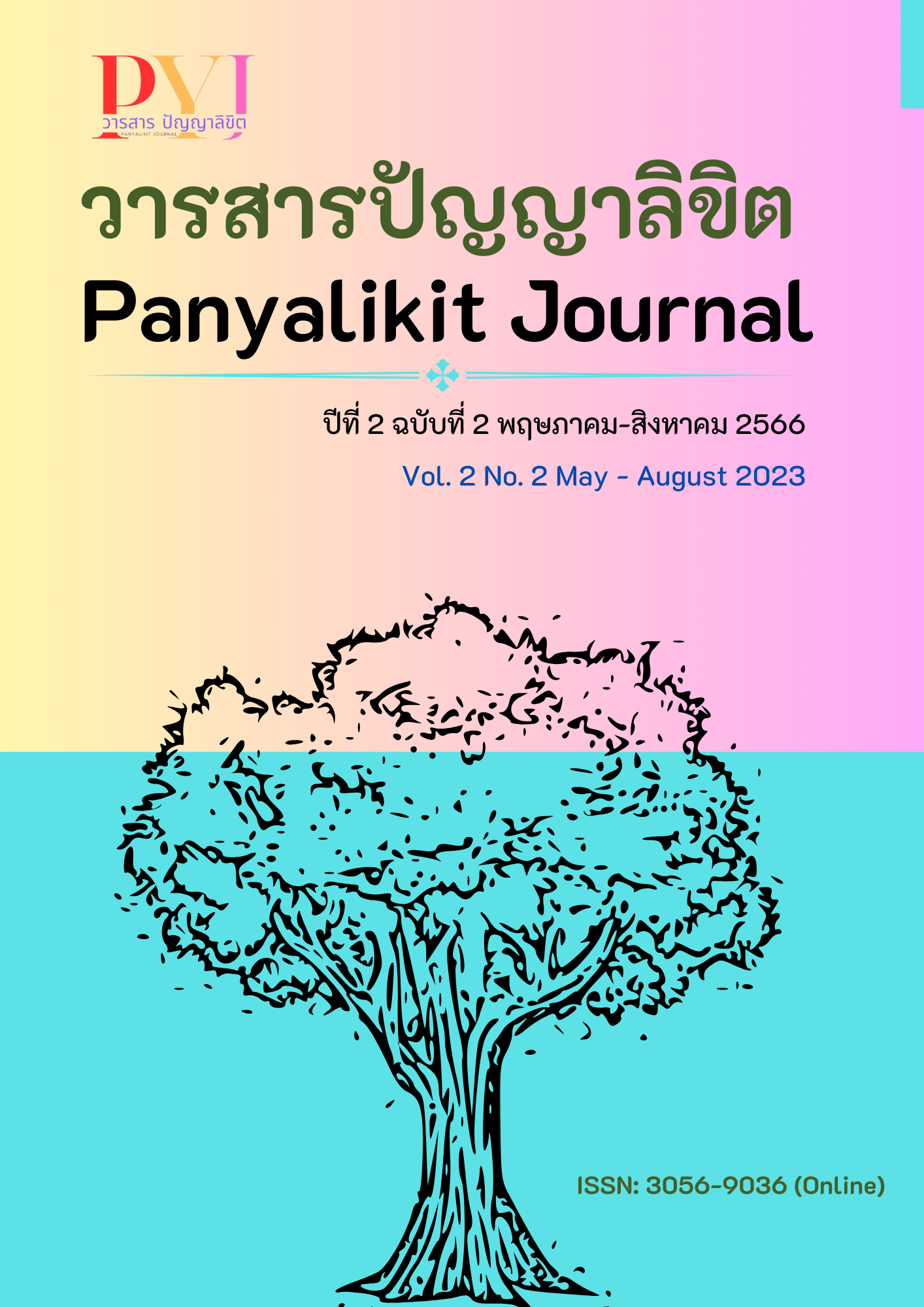Management of The Modern Thai Drug Suppression Process in Bangkok
Main Article Content
Abstract
The objectives of this research are 1) To study and analyze the problems of managing the modern Thai drug suppression process in Bangkok 2) To study the guidelines for managing the modern Thai drug suppression process in Bangkok and 3) To suggest guidelines for managing the modern Thai drug suppression process in Bangkok. This research is quantitative research. The sample groups used in this research are: The sample population in Bangkok was 400 people. The research tools used were questionnaires.
The research found that The average weight for all 3 social aspects was 3.16. The S.D. value was 0.91, which can be interpreted as being at a high level. While Surveillance and Organization were the areas with the highest average weights, the top two performed at a high level. Meanwhile, the pushing side had the lowest average weight, which translates to a moderate level.
The average weight for protection in all 3 areas was 3.07. The S.D. value was 0.89, which resulted in a moderate level. While Support and Coordination were the areas with the highest average weights, the top two were moderate. At the same time, the operations side had the lowest average weight, which translates into a moderate level.
The level of management of the modern drug suppression process has an average weight for all 5 aspects equal to 3.20. The S.D. value is equal to 0.88, which can be interpreted as being at a high level. While the problem-solving aspect had the highest average weight, the result was found to be at a high level. Next is the impact aspect, which is said to be at a high level. In terms of evaluation, the results were found to be at a high level and in terms of efficiency, the results were found to be at a high level, respectively. The legal sector had the lowest average weight, which resulted in a high level.
Article Details

This work is licensed under a Creative Commons Attribution-NonCommercial 4.0 International License.
References
กัลยา วานิชย์บัญชา.(2560). การวิเคราะห์สถิติชั้นสูงด้วย SPSS for Window (พิมพ์ครั้งที่ 12). กรุงเทพฯ: สามลดา.
ธนาคม มาตวิจิตร์ และนิตยา สินเธาว์. (2563). ประสิทธิผลของการนานโยบายการป้องกันและปราบปรามยาเสพติดไปปฏิบัติของจังหวัดราชบุรี. วารสารลวะศรี มหาวิทยาลัยราชภัฏเทพสตรี, 4(2), 115-126.
ธัศฐ์ชาพัฒน์ ยุกตานนท์. (2562). พุทธจริยศาสตร์: ทางเลือกของการป้องกันการทุจริตคอร์รัปชั่น. วารสารสันติศึกษาปริทรรศน์ มจร., 6(ฉบับพิเศษ), 624-634.
ธัศฐ์ชาพัฒน์ ยุกตานนท์. (2565). กระบวนการไกล่เกลี่ยข้อพิพาทโดยพุทธสันติวิธี ของศาลเยาวชนและครอบครัวกลาง (ดุษฎีนิพนธ์พุทธศาสตรดุษฎีบัณฑิต).มหาวิทยาลัยมหาจุฬาลงกรณราชวิทยาลัย.
ธัศฐ์ชาพัฒน์ ยุกตานนท์. (2565). การศึกษาเรื่องปัจจัยที่มีผลต่อผลสัมฤทธิ์ของการเรียนการสอนแบบออนไลน์ภายใต้สถานการณ์การแพร่ของเชื้อไวรัส COVID-19. วารสารสันติศึกษาปริทรรศน์ มจร., 10(2), 509-522.
ภัทรวดี ใยน้อย และบุญอนันต์ บุญสนธิ์. (2562). การขับเคลื่อนแนวทางการแก้ไขปัญหายาเสพติดของเด็กและเยาวชนไทย. การประชุมวิชาการระดับชาติ “การเรียนรู้ด้านมนุษยศาสตร์และด้านสังคมศาสตร์” ครั้งที่ 3. คณะมนุษยศาสตร์และสังคมศาสตร์ มหาวิทยาลัยราชภัฏสวนสุนันทา.
ศศิวิมล คำเมือง และคณะ. (2565). นโยบายสาธารณะด้านการป้องกันและปราบปรามยาเสพติดของประเทศไทย. วารสารวิชาการธรรมทรรศน์, 22(2), 409-420.
ศักดิ์ หมู่ธิมา และบุญเอื้อ บุญฤทธิ์. (2562). การจัดการแบบมีส่วนร่วมของชุมชนในการป้องกันปัญหายาเสพติดในกรุงเทพมหานคร : กรณีศึกษาเขตสวนหลวง. วารสารมหาวิทยาลัยราชภัฏธนบุรี,13(2), 11-25.
DOH กรมอานามัย. (2565). ประชากรทะเบียนราษฎร์ จำแนกรายเพศ ปีงบประมาณ 2565. สืบค้นวันที่ 24 กรกฎาคม 2565, จาก http://dashboard.anamai.moph.go.th/population/pop-all/?year=2022
Yamane, T. (1973). Statistics: An Introductory Analysis. 3rdEd. New York: Harper and Row Publications.


